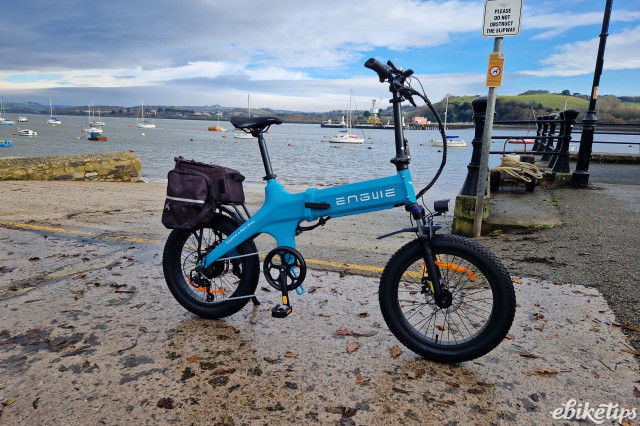Charity Electrical Safety First (ESF) have recently made public a detailed 72 page report dramatically entitled 'Battery Breakdown - Why are e-scooter and e-bike batteries exploding in people's homes and what can be done about it?'
Amongst many other recommendations, some of the most noticeable and the most likely to affect readers (should they be enacted) are:
- The development of a product standard specific to conversion kits
- Legislation to make online marketplaces take reasonable steps to prevent or delist unbranded and potentially non-compliant conversion kits
- A ban on the sale of universal chargers for e-micromobility vehicles or introduction of standards for non-proprietary charging systems.
It's an impressively detailed report using both desktop and laboratory work. Just to give one example of ESF's research techniques: "Third-party sellers through online marketplaces are also profiteering from the sale of unbranded 'universal' chargers for lithium-ion batteries, which can result in overcharging at higher voltages than intended. Tests carried out by Electrical Safety First (ESF) at BRE’s laboratories, to simulate foreseeable use of a universal charger, resulted in fire and explosions."
ESF are well known to us here at ebiketips as only last month we reported on how e-bike chargers that pose a fire risk had (again) been found on sale on Amazon, eBay and Wish.com.
Whilst it's widely acknowledged that well-made e-bike batteries with proprietary chargers are very safe, there does appear to be an emerging problem with the less regulated corners of the market - in particular in the area of less accountable 'bargain basement' type online sellers.
An upward trend in such incidents has been noted by the London Fire Brigade and this is backed backed up by figures from insurers. The report notes there were four deaths attributable to e-micromobility battery fires in the first three months of 2023.
Focus on kits and chargers
Conversion kits come in for particular scrutiny but the report notes, "Notwithstanding the rise in incidents and the warnings being issued, correctly designed and fitted conversion kits sourced from reputable manufacturers and retailers, fitted professionally to a suitable cycle, are not inherently dangerous."
Despite that caveat, ESF says, "DIY conversions should be discouraged," adding, "Many conversion kits that are available from less scrupulous dealers are more powerful. They push a DIY-built e-bike beyond the legal safeguards of EAPC rules and leave the user and pedestrians vulnerable to serious injury, and the former liable to prosecution."
Our own guide to the best conversion kits concentrates on established, experienced brands and gives further advice on fitting and legality. We continue to view them as a cost effective path to e-biking as long as they are purchased from responsible sellers and fitted correctly to a suitable bike.
It's widely recognised that charging with an incorrect charger or charging a poorly made or damaged battery is a highly risky affair and the charging itself is the time of maximum danger. Hence the report recommends a possible ban for third-party chargers.
The situation with buying third party chargers is more complex than it may first appear, as the report notes.
"The situation is further complicated by the fact that the correct charging voltage for a particular battery is not the same as the battery voltage. The relationship between battery voltage, the ideal charging voltage and the rate of charge is different for different battery chemistries."
In addition, third party chargers come in a huge range of connector types and voltages which may be incompatible, with some connectors designed to operate at low voltages used on much higher voltage chargers.
If you want more detail on just what constitutes a safe battery and what's potentially unsafe check out our guide to the difference between a safe battery and a fire risk.
The report
Here's a summary of the report's main recommendations in addition to those mentioned above.
The government should...
- Mandate the development of a consumer product standard, specific to fire resistant charging containers for e-micromobility batteries
- Run consumer awareness campaigns alongside fire and rescue services and consumer protection organisations about the risks associated with e-bikes and e-scooters charging and must raise awareness of the general risks in using illegal e-bikes
- Promote consumer education around the risks and liabilities of modifying a pedal bike to an e-bike using a conversion kit.
- Deliver a consumer awareness campaign to clarify legislation around the use of private e-scooters. If the road use of e-scooters is legalised, the government should consider tighter design regulation as in the following graphic:
In addition to the government actions...
- The Office for Product Safety and Standards should consider mandatory third-party certification for e-bike and e-scooter batteries.
- Trading Standards should prioritise market surveillance of businesses marketing e-micromobility products to tackle mis-selling practices. Note some other agencies such as DVSA and Advertising Standards Authority have already been taking action in this area as we have covered here and here.
- There's also a raft of very detailed proposals on how regulatory bodies can ensure safer charging by such measures as limiting the voltage of charging circuits and marking batteries chemical constituents and charging voltage. In addition the report also details recommendations in existing technical standards and recommendations from other expert bodies that could be adopted.
There's also an acknowledgement that the problem of poor quality batteries, third party chargers and unsafe charging practices is particularly acute with low paid e-bike delivery riders who may not have financial resources to to buy higher quality e-bikes and for whom budget conversions may be particularly alluring. ESF makes multiple recommendations specific to the industry, the chief one being that delivery apps should take responsibility for their riders' e-bikes.
Recycling an area of concern too
The report quotes a 2022 Material Focus report whose results suggest, "that batteries which have not been removed from unwanted electricals cause more than 700 fires annually in refuse collection vehicles and at household waste recycling centres."
Accordingly, the report concludes, "Enhanced national regulation for recycling is needed to reduce the incidence of fires from the incorrect disposal of batteries. The Department for Environment, Food and Rural Affairs and the regulators should consider introducing regulatory measures requiring more prominent markings on batteries: These should include cell chemistry."
In addition, "Local government should introduce kerbside collections for battery recycling, including e-micromobility batteries."
> Old worn-out e-bike batteries: repair, recycle, refurbish or replace?
Ball firmly in the authorities court
With so many detailed and thoughtful recommendations, it appears that the ball is now firmly in the government's court and also in the hands of its regulatory sub-bodies. Looking around the world we can see how some other areas have started to tackle the issue of charging and battery fires.
We have already looked in detail at how New York has begun to take measures, starting with a major investment in public charging in an effort to keep the charging process away from people's homes
We've also examined the major new European battery legislation designed to make lithium batteries more recycleable and safer - though exactly how this is achieved has sparked its own safety debate.
There's certainly no lack of ideas for how to make battery use and charging safer but it remains to be seen what the government response is to the report.
> Are e-bike batteries safe? What’s the difference between a safe battery and a fire risk?










